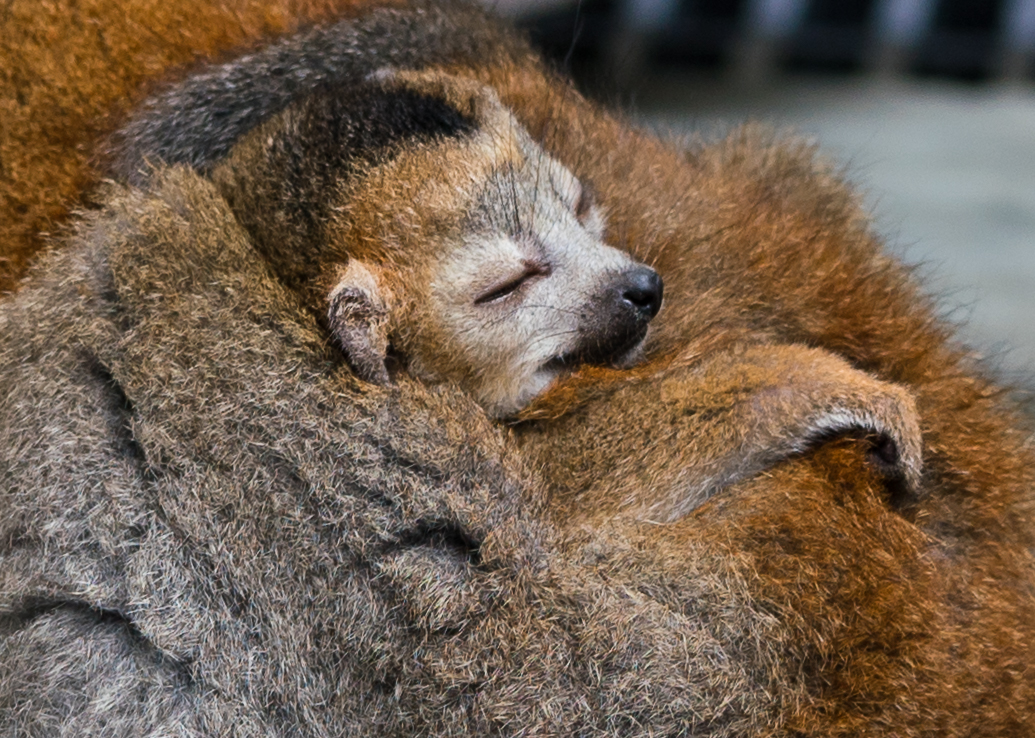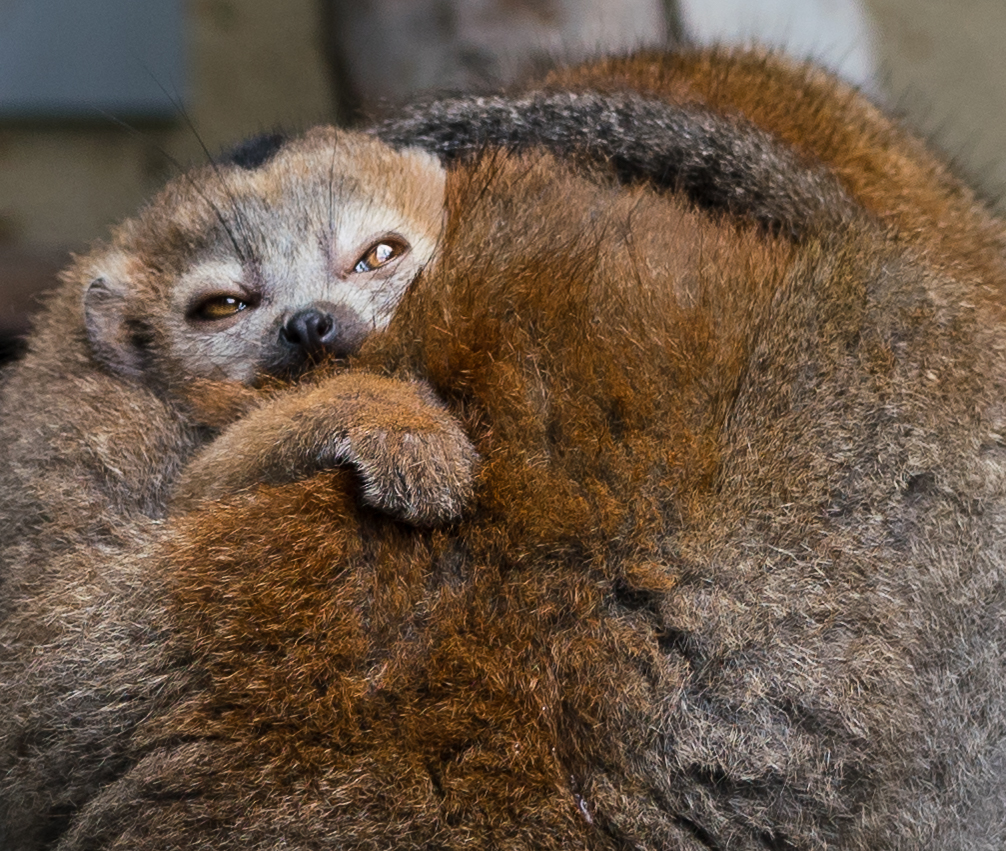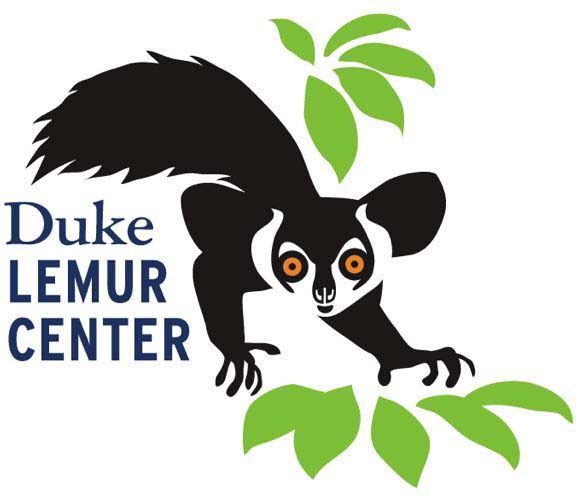
Siwa, an endangered crowned lemur, snoozes while nestled into mom Seshat’s belly fur. Photo by Sara Clark.
Look closely…very closely…there! Our newest baby crowned lemur, Siwa, is still tucked safely around his mother, Seshat’s, belly — and as such is sometimes a little tough to spot! Seshat and father Zuberi are very protective of their little one, so our keepers haven’t gotten close enough yet to tell definitively if Siwa is a male or female!
While crowned lemurs are sexually dichromatic (meaning males and females are different colors), infant crowned lemurs are born looking just like mom, and males don’t change color until they are a little older. Siwa hasn’t shown his or her true colors yet, but we should find out soon! Our keepers suspect that the little one might be a male, since we’re starting to see a bit of dark fur growing in on the top of Siwa’s head, which is a coloration typical of male crowned lemurs.
Under the watchful eye of their parents, Siwa is growing increasingly brave and starting to hop off of Seshat’s back during feeding time. At this age, lemurs are learning about their environment and how to act like a lemur, so Siwa will stretch their neck all around to take in the surroundings, while still clinging tightly to mom’s belly. Seshat is an experienced mother and is very attentive, and nobody gets too close without Zuberi coming over to protect them both!
Crowned lemurs at the Duke Lemur Center have an Egyptian naming theme, and Siwa (pronounced “SEE-wuh”) is named after an oasis settlement in Egypt. In Madagascar, crowned lemurs are typically found in the northern region of the island. This region is known for its unique landscape of sharp limestone cliffs, called tsingy. Crowned lemurs can navigate these sharp cliffs, as they are dexterous climbers.
Unfortunately, crowned lemurs are classified as Endangered in Madagascar and their small habitat range continues to shrink due to deforestation from slash and burn agriculture. The Duke Lemur Center actively works in conservation in Madagascar and right here in Durham by creating a “genetic safety net” for each species’ wild counterparts on the island.
While Duke University supports our operations here at the Duke Lemur Center, our conservation programs are fully funded by grants and by donations from people like you! If you would like to learn more about how we protect lemurs in Madagascar, or if you would like to support our conservation projects, visit lemur.duke.edu/protect!
Join us for BABY WEEK 2020!
The Duke Lemur Center has welcomed numerous infants this summer through our conservation breeding program, and we’re announcing six — yes, SIX! — of the newest babies this week! Here’s how to make sure you don’t miss ANY of these special announcements, or the accompanying photos and videos:
Follow us on Facebook: Visit our Facebook page, click “Follow,” and select “See First” from the dropdown menu
Like us on Instagram: Search for @dukelemurcenter
Meet our other BABY WEEK infants:
Myna, a fat-tailed dwarf lemur (announced Monday, July 20)
Ripley, a black and white ruffed lemur (announced Tuesday, July 21)

Sleepy Siwa curled around mom Seshat’s belly. Photo by Sara Clark.
How you can help crowned lemurs
Adopt Sanura, a crowned lemur: If you want to learn more about crowned lemurs AND help support their care and conservation, please consider symbolically adopting Sanura through the DLC’s Adopt a Lemur Program! Your adoption goes toward the $8,400 per year cost it takes to care for each lemur at the DLC, as well as aiding our conservation efforts in Madagascar. You’ll also receive quarterly updates and photos, making this a fun, educational gift that keeps giving all year long! Adoption packages start at just $50. Please visit our Adopt a Lemur homepage to learn more.
Send a “baby shower” gift: Make a ruffed lemur’s day by sending a special gift in Siwa’s honor via the DLC’s amazon.com wishlist!
Contribute to baby Ripley’s “scholarship fund”: Did you know it costs $8,400 per year to care for one lemur at the DLC — including baby Siwa? We rely upon donations from individuals like you, who personally invest in our work to care for lemurs and protect their habitat in Madagascar. To learn more about the DLC’s “return on investment,” please see our 2019 stewardship booklet. A heartfelt THANK YOU for your support — we couldn’t do this work without you!

